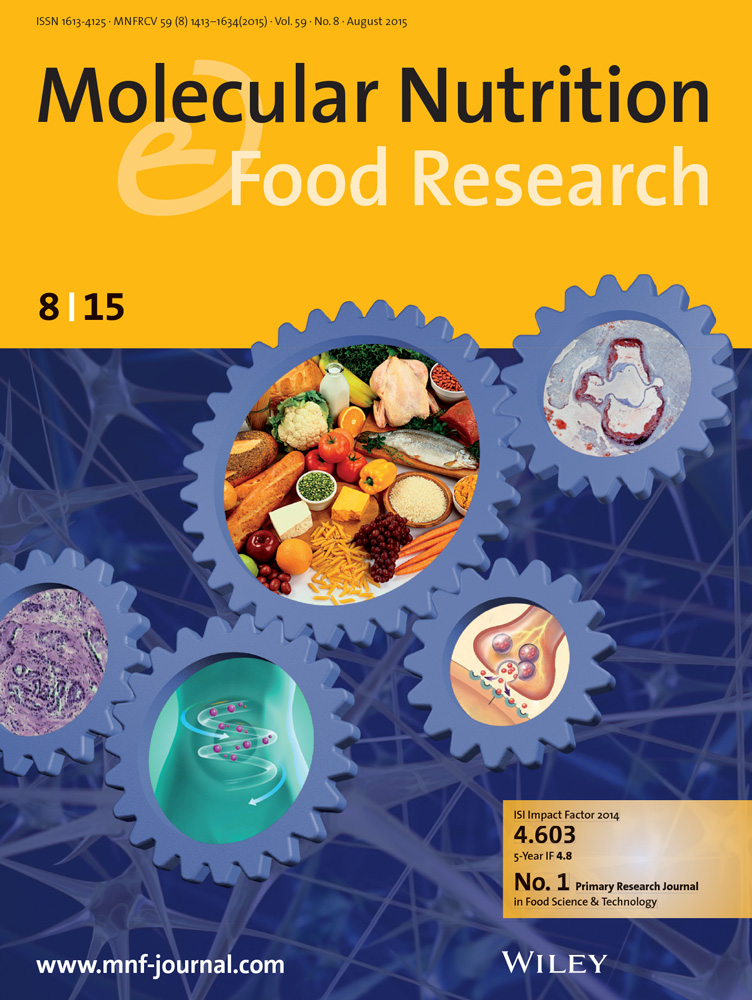Dietary Adaptation of Non‐Heme Iron Absorption in Vegans: A Controlled Trial
IF 4.5
2区 农林科学
Q1 FOOD SCIENCE & TECHNOLOGY
引用次数: 0
Abstract
Non‐heme iron, mainly from plant foods, is theoretically less bioavailable than heme iron from animal food, which might increase the risk of iron deficiency in vegans. This study aimed to evaluate acute changes in plasma iron levels following non‐heme iron intake in vegans compared with omnivores and to explore the mechanisms regulating these changes. Twenty‐seven participants (18–30 years old) were divided into vegans and omnivores. After baseline measurements (body composition, blood pressure, and blood biomarkers), the participants consumed 150 g of pistachios. Blood samples were taken at baseline, 120 and 150 min after consumption to measure serum iron. The main outcome was the area under the curve (AUC) of serum iron The AUC for serum iron was significantly higher in vegans (1002.8 ± 143.9 µmol/L/h) compared to omnivores (853 ± 268.2 µmol/L/h) (素食者非血红素铁吸收的饮食适应性:一项对照试验
非血红素铁,主要来自植物性食物,理论上比来自动物性食物的血红素铁的生物可利用性更低,这可能会增加素食者缺铁的风险。本研究旨在评估纯素食者与杂食者在摄入非血红素铁后血浆铁水平的急性变化,并探讨这些变化的调节机制。27名参与者(18-30岁)被分为纯素食者和杂食者。在基线测量(身体成分、血压和血液生物标志物)之后,参与者消耗了150克开心果。在进食后的基线、120和150分钟采集血样,测定血清铁含量。纯素食者血清铁的曲线下面积(AUC)为1002.8±143.9µmol/L/h,显著高于杂食者(853±268.2µmol/L/h) (p = 0.04;ES: 0.68)。多因素回归分析发现纯素组hepcidin水平(β = - 0.5, p = 0.03)和基础铁水平显著相关。该研究表明,与杂食动物相比,素食者的非血红素铁吸收率更高,强调了植物性饮食中铁代谢的生理适应。需要更大规模的纵向研究来证实这些发现,并评估植物性饮食对铁代谢的长期影响。
本文章由计算机程序翻译,如有差异,请以英文原文为准。
求助全文
约1分钟内获得全文
求助全文
来源期刊

Molecular Nutrition & Food Research
工程技术-食品科技
CiteScore
8.70
自引率
1.90%
发文量
250
审稿时长
1.7 months
期刊介绍:
Molecular Nutrition & Food Research is a primary research journal devoted to health, safety and all aspects of molecular nutrition such as nutritional biochemistry, nutrigenomics and metabolomics aiming to link the information arising from related disciplines:
Bioactivity: Nutritional and medical effects of food constituents including bioavailability and kinetics.
Immunology: Understanding the interactions of food and the immune system.
Microbiology: Food spoilage, food pathogens, chemical and physical approaches of fermented foods and novel microbial processes.
Chemistry: Isolation and analysis of bioactive food ingredients while considering environmental aspects.
 求助内容:
求助内容: 应助结果提醒方式:
应助结果提醒方式:


